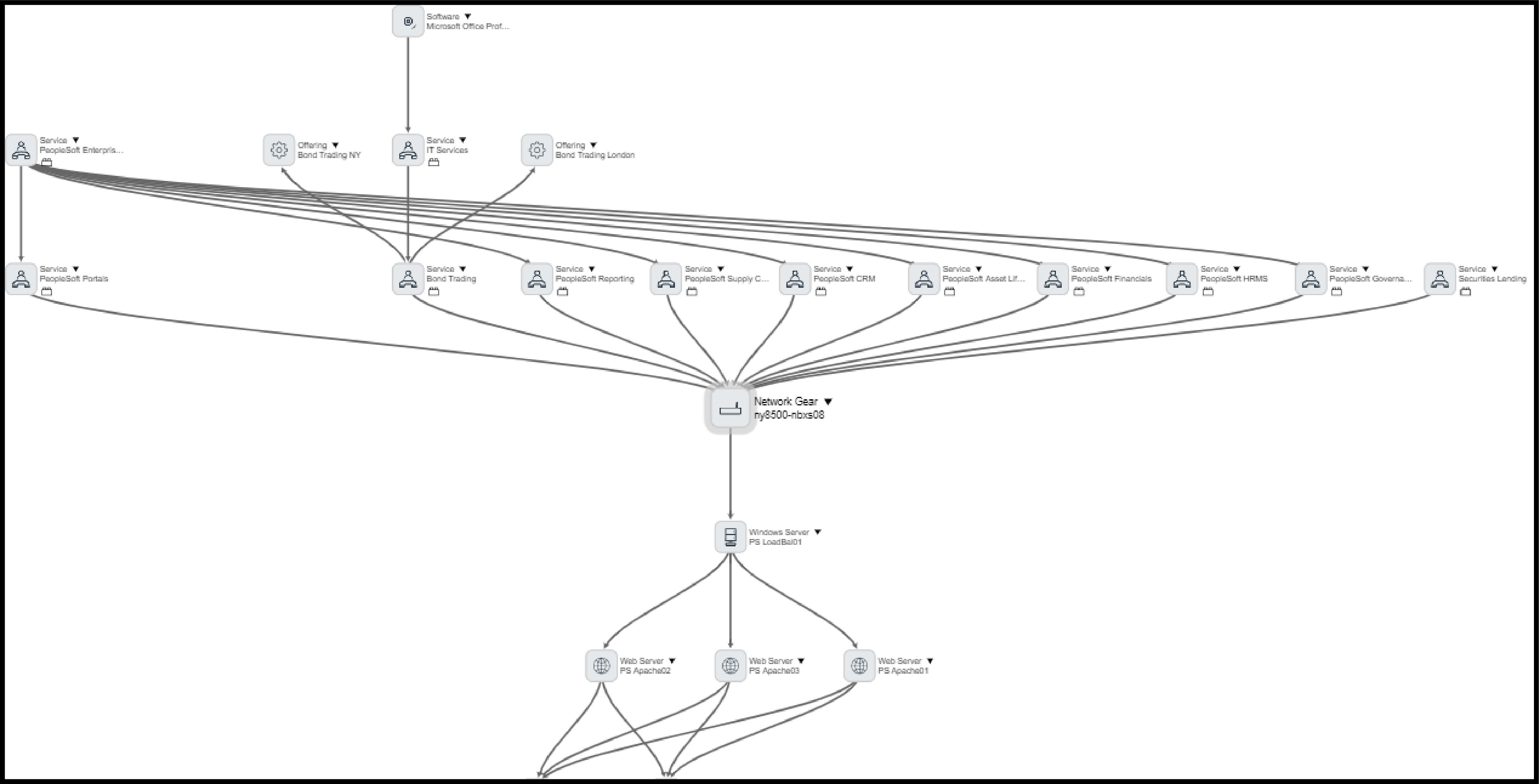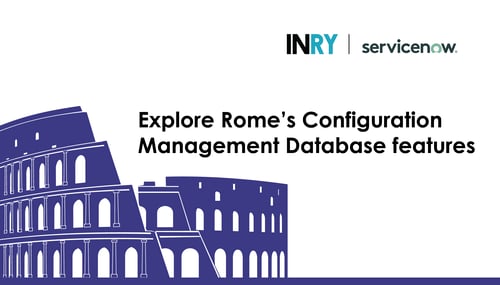We are excited to share what's new in the upcoming Rome release and have created a 5-part blog series to share insights on features enhancements, UI changes, and security improvements. With the ability to preview, test, and upgrade early (with "the new ServiceNow's n-1 support policy"), the program allows us to plan and prepare for a seamless upgrade transition to the latest Now Platform for our customers and us. This article assumes that the reader has a basic understanding of the Configuration Management Database (CMDB).
Some of the compelling benefits we’ve seen from Rome previews include the ability to:
- Simplify operations and boost productivity with the new Project & Resource Management features in Rome
- Create and maintain configuration items to provide visibility with CMDB in Rome and Quebec
- Manage the life cycle actions, End of Life Policies, detection, and archival of CI Data with the improved CMBD Data Manager in Rome
- View multiple records in a single window on the new Agent Workspace in Quebec and Rome to give Agents a quick overview of cases
- Assess Vendor Performance Using Configurable Vendor Metric Indicators
The Configuration Management Database (CMDB) creates and maintains configurations, called configuration items (CIs), to provide visibility into your organization's infrastructure. You can use CIs to represent any physical entity (desktops, servers, printers), logical entity (databases, software, services), and conceptual (Relationships between different entities physical/logical).
A CI does not exist on its own and has its dependencies and relations with other CIs. These relationships between data make CMDB a powerful decision support tool.

Image: An in-house instance view of CI with its relationships in the CMDB
Highlights of the CMDB in Rome
The ServiceNow Rome release is the Now platform's latest upgrade version; a collection of new features has been implemented to enhance the functionality of the CMDB.
- Related lists to display additional components for a CI: Previously, components running on the CI found by Discovery scans would only be associated with the CI (e.g., for a network router, the components are network adapter card, IP addresses, etc.). However, components that are recorded in the CMDB for the CI via other processes but not found by the scan are absent from the related list of the CI (e.g., routing rules, firmware version etc.). However, in Rome, the related list is enhanced to associate all the components needed to track the CI's functioning and remediate the issue during an outage.
- Teams-related list: Different user groups can be associated with the CI for support and maintenance purposes. When multiple groups are related to a CI, you can designate only one group as primary owners of the CI and categorize the groups with a meaningful tag, e.g., Managed by Group, Access Certification Group, etc. When an incident is recorded on a CI during an outage, the incident is assigned to the primary group to resolve the outage.

Image: A list of Teams associated with managing the CI
- Overlapping IP addresses in the CMDB Model: For CIs (network gear) identified by IP addresses and have overlapping IP addresses that exist in different network partitions can be identified as separate CIs by the Identification and Reconciliation engine (IRE). You can do this by storing the unique Network partition identifier for the IP Address.
- Before and after IRE custom scripts: For the Technical/Maintenance team importing CI data into the CMDB, you can write custom scripts in javascript to perform operations on the inbound data to the CMDB. A useful application of a Before IRE script is to calculate certain values based on the attributes of the CI or skip entering the CI into the database.
- CMDB Data Manager: CMDB Data Manager is a policy-driven framework that assists in managing the CI life cycle operations, such as deletion and archival in bulk. Over time CMDBs expand to large-scale databases due to the constant evolution of the cloud environment. Hence, the need calls for performing operations on a larger scale to maintain the health of the CMDB.
Important Quebec features also included in the Rome release
- Reclassification restriction rules: The Identification and Reconciliation engine (IRE) can be restricted to downgrade a CI from its current classification to a lower classification type during CMDB data loads to prevent data loss. For example, a Network Attached Storage drive (NAS) server can be reclassified as a Hard Disk when certain data attributes are not available at load time.
- Standardize life-cycle fields and values across the system: The Common Service Data Model (CSDM) implements a set of standard fields and values for managing the life cycle status of CIs. By making use of standard values across applications, we can effectively manage the assets through their lifecycle. Using standard lifecycle values is important in scenarios such as:
- Easy to report on the Operational status of CIs at any given point in time.
- Generate a consistent set of tasks to be worked on based on the Audits of CIs
Sources:
CMDB Rome release features
CMDB Quebec release features
CMDB Data Manager
Stay tuned for the upcoming article on CMDB Data Manager available next week.
About INRY
INRY is an Elite ServiceNow partner with a long and successful history of delivering digital workflow automation. We run our business on the same platform, which gives us the ability to experience first-hand the impact and value we provide for our clients. As a strategic partner and customer, we get access to the latest ServiceNow innovations through the ServiceNow Early Release Program well in advance than most partners.
About the Author: Deepak Munipati
Deepak is a Lead Consultant at INRY and has led large transformation projects on ITBM, CSM, and ITSM products in ServiceNow. He is passionate about leveraging ServiceNow to deliver client value. In this article, Deepak shares insights on how a CMDB can be leveraged by an organization to maintain a single source of truth regarding its assets. When away from work, Deepak loves to travel, cook, and surf the web.
